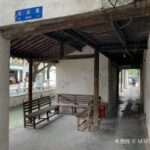Kunqu is known as the ‘ancestor of all operas’. It has elegant lyrics and beautiful rhythm. It is one of China’s first batch of intangible cultural heritages, and its birthplace is Suzhou. The China Kunqu Museum aims to rescue, protect, inherit and promote Kunqu art. Its main functions are to collect, research, display and perform Kunqu heritage. It not only displays material Kunqu cultural relics and materials, but also displays intangible traditional Kunqu art.
The museum site was originally the Quan Jin Guild Hall. It is one of the more than 100 guild halls and offices in Suzhou’s history that has been relatively well preserved so far. Here, you can see the engraved edition of ‘Huan Gan Ji’ from the Ming Dynasty, the handwritten copy of ‘Peony Pavilion – Visiting the Garden’ from the Qianlong period of the Qing Dynasty, the exquisitely carved mahogany opera boat, the lamp-decorated Kunqu hall name plaque embedded with jade and jewels, the story-telling figurine unearthed from the tomb of Emperor Xuan of the Western Han Dynasty, Ma Rufei’s story-telling notebook ‘Dream History’, the pipa once used by Xue Laqing, the king of pipa. There are also two sets of opera model of ‘Drunk Return’ and ‘Boating on the Lake’, a set of 24 ancient court musical instrument double-tone chime bells, a set of 37 cloud offerings, and the Tongguan musical instrument unearthed from the Neolithic cultural site.Opening hours: Open all year round. Tuesday to Sunday, 09:00 – 17:00.

Must-see tips: 1. There are regular performances at 2 pm every Sunday afternoon in the museum. 2. It is close to Ou Garden and can be reached on foot.










